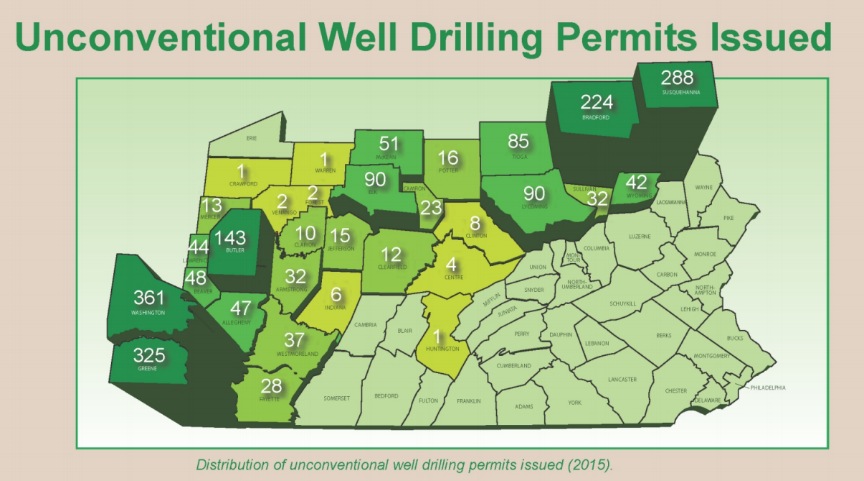
The Pennsylvania Department of Environmental Protection (DEP) released a report summarizing key facts on the Commonwealth’s oil and gas industry. It’s full of charts and maps that tell the interesting story of an international industry birthed in the Keystone State.
The Pennsylvania oil and gas industry helped spur countless innovations touching virtually all facets of modern life, many of which are overlooked today in the fields of medicine, advanced manufacturing and agriculture to name a few. But it all started with Colonel Drake’s oil well in Titusville. Nearby Oil City, in Venango County, grew up around the industry and John D. Rockefeller had an office on the top floor of the Transit Building, which is still there. Today, Range Resources operates many conventional wells not far from this area. And more than a century and a half later, Pennsylvania’s oil and gas industry continues with the shale revolution having reinvigorated it.
Here’s how DEP describes the industry:
Pennsylvania’s conventional “oil patch” in the northwest corner of the state continues to yield Pennsylvania Grade crude oil. This particular oil is paraffin-based, renowned for its lubricating qualities and is used in the manufacture of petroleum lubricants such as motor oils and as an ingredient in consumer products such as cosmetics, ointments and lotions.
In addition to historic oil reserves, Pennsylvania has also been a source of natural gas for more than a century. Although it had been suspected that deposits of natural gas existed within vast tight shale formations deep under Pennsylvania’s surface, conventional extraction methods were unable to effectively unlock the natural gas from its source and the actual quantities were not well understood.
By 2005, horizontal drilling methods combined with high-volume hydraulic fracturing techniques were beginning to be successfully and economically deployed to capture natural gas from Pennsylvania’s shale deposits. Today, Pennsylvania is the second largest producer of natural gas in the nation.
The Commonwealth is, once again, a leader. Pennsylvania DEP’s 2015 Oil and Gas Annual Report summarizes the story in a series of charts and maps with easy to read explanations. Many of the charts and maps are self-explanatory, though.
More than 4.6 trillion cubic feet of natural gas was produced in Pennsylvania in 2015. The number of natural gas wells being drilled in Pennsylvania decreased, but the volume of natural gas produced continued to increase. The term “unconventional” is now really a bit of a misnomer, as shale is the primary source of natural gas in the United States.

Notice the strength of the Southwestern Pennsylvania counties, where 325 permits were issued in Greene County with a state-topping 361 permits issued in Washington County, home to Range’s core operating region and birthplace of the Marcellus Shale discovery in 2004.
Indeed, reading DEP‘s 2015 Oil and Gas Annual Report, leads to but one conclusion: that the Commonwealth continues to be a leader in oil and gas – a trend that began in 1859 and continues today.